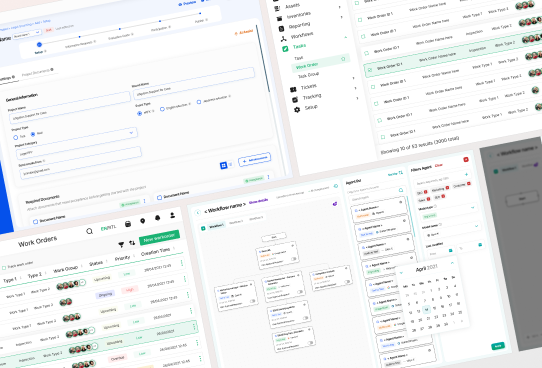Emotional Design
<p>Emotional design is a user experience (UX) strategy that prioritizes the emotional responses of users when interacting with a product. It emphasizes crafting experiences that evoke positive emotions, making the product memorable and fostering a deeper connection with users. By tapping into user emotions, companies can create more engaging and satisfying products.</p>
<p>Emotional design originated from the work of Donald Norman, who introduced the concept in his book, "Emotional Design: Why We Love (or Hate) Everyday Things". Norman's framework categorizes emotional responses into three levels: visceral, behavioral, and reflective.</p>
<h2>Levels of Emotional Design</h2>
<p>Understanding the three levels of emotional design helps in creating products that resonate with users on multiple fronts.</p>
<h3>Visceral Design</h3>
<p>Visceral design focuses on the initial sensory impact of a product. It’s about aesthetics and immediate perceptions. For example, <span style="color:#2896FF; text-decoration:underline;"><a href="https://www.apple.com/macbook-air/">Apple's MacBook Air</a></span> is not only functional but also visually appealing, triggering a positive first impression with its sleek design.</p>
<h3>Behavioral Design</h3>
<p>Behavioral design is concerned with the usability and functionality of a product. It's about how well a product performs and how easy it is to use. For instance, the intuitive interface of <span style="color:#2896FF; text-decoration:underline;"><a href="https://www.tesla.com/models">Tesla's Model S</a></span> enhances the driving experience, making it enjoyable and seamless.</p>
<h3>Reflective Design</h3>
<p>Reflective design relates to the personal meaning and value a product holds for the user. It involves users’ memories, self-image, and satisfaction. A great example is the emotional connection people have with their <span style="color:#2896FF; text-decoration:underline;"><a href="https://www.instagram.com/">Instagram</a></span> feeds, filled with memories and moments that reflect their lives.</p>
<h2>Importance of Emotional Design</h2>
<p>Emotional design is crucial for several reasons:</p>
<ul>
<li><strong>User Loyalty:</strong> Products that evoke positive emotions are more likely to retain loyal users. This loyalty translates into repeat usage and referrals.</li>
<li><strong>Increased Engagement:</strong> Users are more engaged with products that provide enjoyable experiences. For example, <span style="color:#2896FF; text-decoration:underline;"><a href="https://www.airbnb.com/">Airbnb</a></span> uses emotional design to make users feel at home, increasing their engagement with the platform.</li>
<li><strong>Competitive Advantage:</strong> Companies that successfully implement emotional design can differentiate themselves from competitors. Unique emotional experiences can become a significant selling point.</li>
</ul>
<h2>Implementing Emotional Design</h2>
<p>Creating an emotionally engaging product involves several steps:</p>
<h3>User Research</h3>
<p>Conducting comprehensive user research helps in understanding the emotions, motivations, and pain points of users. Tools like <span style="color:#2896FF; text-decoration:underline;"><a href="https://www.usertesting.com/">UserTesting</a></span> allow companies to gather insights directly from users.</p>
<h3>Design Elements</h3>
<p>Incorporating key design elements such as color, typography, and micro-interactions can significantly impact the emotional appeal of a product. For instance, the use of warm colors and playful animations in apps like <span style="color:#2896FF; text-decoration:underline;"><a href="https://www.duolingo.com/">Duolingo</a></span> make language learning fun and engaging.</p>
<h3>Prototyping and Testing</h3>
<p>Creating prototypes and conducting user testing ensures that the design resonates emotionally with users before the final product launch. Platforms like <span style="color:#2896FF; text-decoration:underline;"><a href="https://www.invisionapp.com/">InVision</a></span> provide comprehensive prototyping and testing solutions.</p>
<h2>Case Study: Emotional Design in Climate Tech</h2>
<p>Climate tech companies often use emotional design to connect with users who are passionate about sustainability. For example, <span style="color:#2896FF; text-decoration:underline;"><a href="https://www.nest.com/">Nest</a></span> thermostats not only offer energy efficiency but also sleek, user-friendly designs that appeal to environmentally conscious users. The emotional connection with users who care about reducing their carbon footprint enhances their commitment to the product.</p>
<h2>Conclusion</h2>
<p>Emotional design is a powerful strategy that can transform the user experience, fostering deeper connections and loyalty. By understanding and implementing the principles of visceral, behavioral, and reflective design, companies can create products that not only meet functional needs but also resonate emotionally with users.</p> <p>If you’re looking for inspiration to elevate customer and user experience for enterprise-grade products, View our work with the Ministry of Health of Saudi Arabia for curating the UX of an <a href="https://www.whatifdesign.co/work/enterprise-software-for-hospitals" style="color:#2896FF; text-decoration:underline;">Asset Management Tracking Platform</a></p>
<p>Ready to get started? <a href="https://cal.com/akhilak/what-if-design?duration=30" style="color:#2896FF; text-decoration:underline;">Book a 1:1 consultation call</a> with us today.</p>

Let's scale your impact with great design.
Free consultation, no sales pitch
Thank you! Your submission has been received!
Enter you email correctly!
Let’s talk
Nothing great is built alone.
Let’s connect about your vision, our work and how we can collaborate.
Get in touch
© 2025 What if Design
Stripe climate partner

